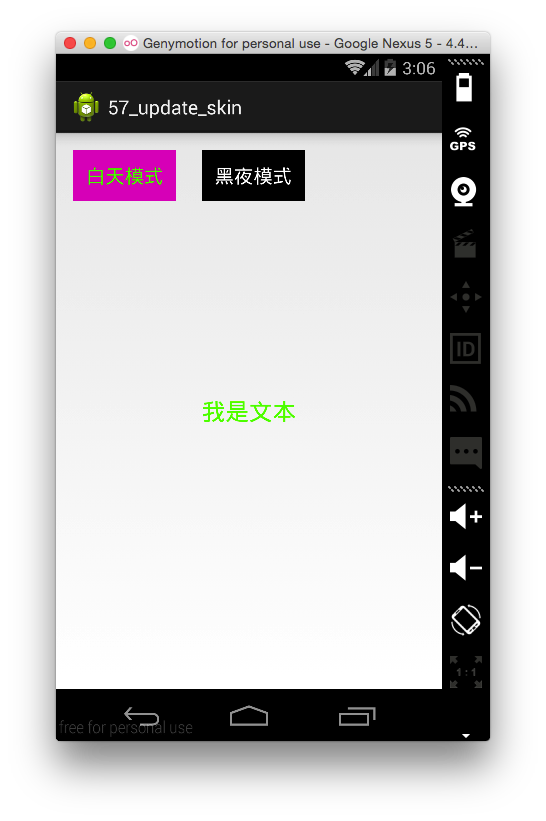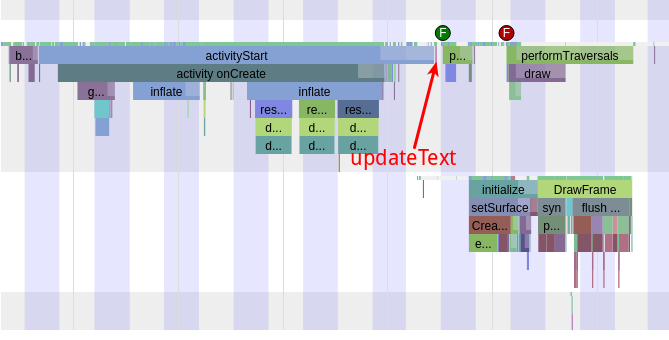編輯:Android資訊
本文主要介紹了隱式Intent匹配目標組件的規則,若有敘述不清晰或是不准確的地方希望大家指出,謝謝大家: )
Intent用於在一個組件(Component,如Activity、Service、Broadcast Receiver)中打開另一個組件。
Intent可分為隱式(implicitly)和顯式(explicitly)兩種:
當明確知道你想打開哪個Component時,它就是你的菜。通常這樣使用:
Intent intent = new Intent(this, MainActivity.class);
intent.putExtra("key", "value");
startActivity(intent);
執行以上代碼會導致目標Component(這裡是MainActivity)被創建(onCreate等一系列生命周期方法被調用)。在MainAcitivity中的相應生命周期方法中通過getIntent.getXxxExtra(“key”)即可得到隨Intent一起傳過來的數據。
Implicitly Intent很好的實現了調用者和被調用者之間的解耦:
調用者通過action、data、category這三個方面描述他的Intent,被調用者通過在manifest文件中聲明的一系列Intent Filter來描述自己能夠響應哪些意圖。如此一來,調用者和被調用者無需互相了解,通過Implicitly Intent這個聯系他們的紐帶就能很好的協同工作。
關於Intent更加詳細的介紹,大家可以參考官方文檔或是相關博文,這裡主要介紹下Implicitly Intent的匹配規則。
只有action、data、category三方都匹配,Intent才算是匹配成功,進而才能打開相應的Component。一個Component若聲明了多個Intent Filter,只需要匹配任意一個即可啟動該組件。
一個Intent Filter中可聲明多個action,Intent中的action與其中的任一個action在字符串形式上完全相同(注意,區分大小寫),action方面就匹配成功。可通過setAction方法為Intent設置action,也可在構造Intent時傳入action。需要注意的是,隱式Intent必須指定action。比如我們在Manifest文件中為MyActivity定義了如下Intent Filter:
<intent-filter>
<action android:name="android.intent.action.SEND"/>
<action android:name="android.intent.action.SEND_TO"/>
</intent-filter>
那麼只要Intent的action為“SEND”或“SEND_TO”,那麼這個Intent在action方面就能和上面那個Activity匹配成功。比如我們的Intent定義如下:
Intent intent = new Intent("android.intent.action.SEND")
...
那麼我們的Intent在action方面就與MyActivity匹配了。
Android系統預定義了許多action,這些action代表了一些常見的操作。常見action如下(Intent類中的常量):
data可進一步分為uri(由scheme、host、port、path | pathPattern | pathPrefix這4部分組成)和mimetype。Intent的uri可通過setData方法設置,mimetype可通過setType方法設置。隱式Intent也必須指定data。同action類似,只要Intent的data只要與Intent Filter中的任一個data聲明完全相同,data方面就匹配成功。需要注意的是:若Intent Filter的data聲明部分未指定uri,則缺省uri為content或file,Intent中的uri的scheme部分需為content或file才能匹配;若要為Intent指定完整的data,必須用setDataAndType方法,原因請看setData和setType方法的源碼:
public Intent setData(Uri data) {
mData = data;
mType = null;
return this;
}
public Intent setType(String type) {
mData = null;
mType = type;
return this;
}
從以上代碼可以看到,setData會把mimeType置為null,setType會把uri置為null。下面我們來舉例說明一下data的匹配。首先我們先來看一下Intent Filter中指定data的語法:
<data android:scheme="...“
android:host="..."
android:port="..."
android:path="..."
android:pathPattern="..."
android:pathPrefix="..."
android:mimeType="..." />
其中scheme、host等各個部分無需全部指定。假如我們為MyActivity的Intent Filter指定了如下data:
<intent-filter>
<data android:mimeType="vidoe/mpeg" android:scheme="http" android:host="www.xxx.com" />
<data android:mimeType="text/plain" android:scheme="http" />
</intent-filter>
那麼我們的Intent想要匹配,mimeType可以為”text/plain”或“video/mpeg”,scheme必須為”http“,host則沒有限制,因為第二個data沒有指定host。
與action和data不同,Intent中的category必須都在Intent Filter中出現才算匹配成功。Intent可以不指定category,若Intent中未指定category,系統會自動為它帶上“android.intent.category.DEFAULT”。所以,想要接收Implicitly Intent的Component都必須在manifest文件中的Intent Filter聲明中帶上“android.intent.category.DEFAULT”。我們可以通過addCategory方法為Intent添加category。
(4)查詢是否有可接收指定Intent的Component
采用PackageManager的resolveActivity或者Intent的resolveActivity方法會獲得最適合Intent的一個Activity;調用PackageManager的queryIntentActivities會返回所有成功匹配Intent的Activity。關於這幾個方法的詳細定義大家可以參考官方文檔,這裡不再贅述。
 Android 存儲系統之架構篇
Android 存儲系統之架構篇
基於Android 6.0的源碼,剖析存儲架構的設計 Android 存儲系統之源碼篇 Android 存儲系統之架構篇 一、概述 本文講述Android存儲系統
 2016年Android平台最佳黑客工具匯總
2016年Android平台最佳黑客工具匯總
免責聲明:此份清單僅供學習之用。知悉黑客軟件能做到哪些。我們不支持讀者利用其中的任何工具進行任何不道德的惡意攻擊行為。 根據業界的一系列評測以及親身經驗,我們整
 Android 更換皮膚思路及解決方案
Android 更換皮膚思路及解決方案
本篇博客要給大家分享的一個關於Android應用換膚的Demo,大家可以到我的github去下載demo,以後博文涉及到的代碼均會上傳到github中統一管理。
 Android應用啟動優化:一種DelayLoad的實現和原理
Android應用啟動優化:一種DelayLoad的實現和原理
0. 應用啟動優化概述 在 Android 開發中,應用啟動速度是一個非常重要的點,應用啟動優化也是一個非常重要的過程.對於應用啟動優化,其實核心思想就是在啟動過